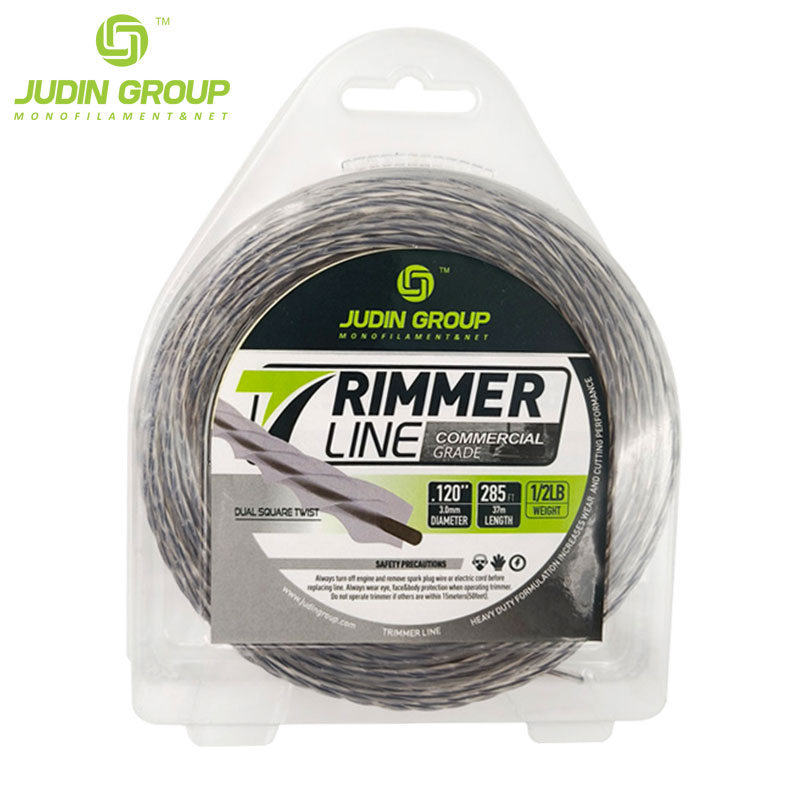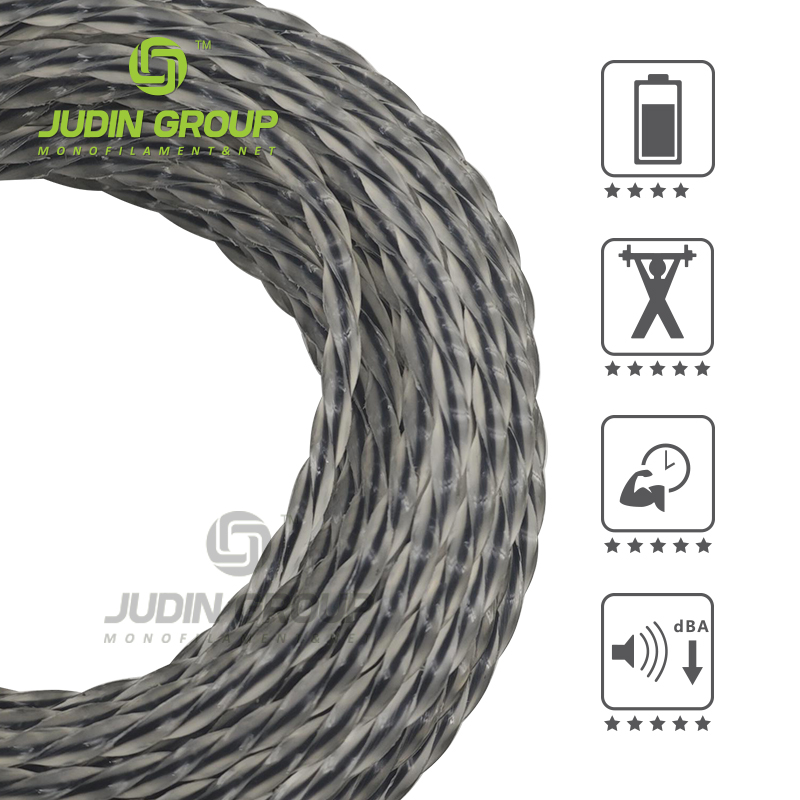Tackling tough vegetation requires the right tools. A well-chosen trimmer line improves cutting efficiency and ensures clean results. Its dimensions, shape, and material directly affect durability and performance. By selecting the appropriate line, you reduce equipment wear, save time, and achieve a polished finish with less effort.
Key Takeaways
- Picking the right trimmer line helps cut better and protects tools. Use a line that fits the job for great results.
- Thicker lines (0.095 inches or more) work well for hard tasks. They last longer and cut through thick plants easily.
- Taking care of your trimmer line, like checking for damage and storing it properly, makes it last longer. This saves money and keeps it working well.
Why the Right Trimmer Line Matters
The role of trimmer lines in cutting tough vegetation
A trimmer line plays a critical role in maintaining your yard, especially when dealing with thick vegetation. It acts as the cutting edge of your trimmer, slicing through grass, weeds, and even tougher plants. Without the right line, your trimmer may struggle to perform effectively. A high-quality trimmer line ensures clean cuts, which not only improves the appearance of your lawn but also promotes healthier plant growth.
When tackling tough vegetation, durability becomes essential. A strong line resists breaking and fraying, even when it encounters hard surfaces like rocks or fences. This reliability allows you to work efficiently without frequent interruptions to replace the line. Choosing the right line can make the difference between a frustrating experience and a smooth, productive one.
Matching the trimmer line to the task for optimal results
Not all trimmer lines are created equal, and selecting the right one depends on the job at hand. For light trimming, a thinner line works well. However, for tougher tasks like clearing thick weeds or overgrown areas, a thicker, more durable line is necessary. The shape of the line also matters. Square or twisted lines, for example, provide sharper cuts and handle dense vegetation better than round lines.
By matching the trimmer line to your specific needs, you can maximize efficiency and minimize wear on your equipment. This approach ensures that you get the best results while saving time and effort.
Key Factors for Choosing a Trimmer Line
Line Dimensions and Their Impact
The thickness of a trimmer line directly affects its performance. Thinner lines, such as those under 0.080 inches, work well for light trimming tasks like cutting grass. For tougher jobs, thicker lines—0.095 inches or more—offer greater durability and cutting power. A thicker line resists breakage when it encounters hard surfaces like rocks or fences. Choosing the right diameter ensures your trimmer operates efficiently and handles the workload without unnecessary strain.
Line Shape and Cutting Performance
The shape of the trimmer line influences how effectively it cuts through vegetation. Round lines are common and durable, but they may struggle with dense weeds. Square or twisted lines, like the .065” Square Dual Power Grass Trimmer Line from Judin, provide sharper edges for cleaner cuts. These shapes reduce drag and improve cutting precision, making them ideal for heavy-duty tasks. Selecting the right shape enhances your trimmer’s performance and saves time.
Material Durability for Tough Jobs
The material of the trimmer line determines its strength and longevity. Lines made from 100% nylon, such as Judin’s premium options, offer excellent durability. High-quality materials resist wear and breakage, even during demanding tasks. For professional or commercial use, consider lines with reinforced cores. These designs handle tough vegetation and extend the lifespan of your equipment.
Task-Specific Recommendations for Vegetation Types
Matching the trimmer line to the vegetation type ensures optimal results. For light grass, a thin, round line works well. For thicker weeds or overgrown areas, a thicker, square-shaped line provides better performance. If you frequently encounter tough vegetation, a dual-core line with enhanced durability is a smart choice. Always assess your yard’s needs before selecting a line.
Practical Tips for Trimmer Line Maintenance
Replacing trimmer lines effectively
Replacing your trimmer line correctly ensures your equipment performs at its best. Start by consulting your trimmer’s manual to understand the specific type and size of line it requires. Always turn off the trimmer and disconnect it from the power source before replacing the line. This step prevents accidents and ensures your safety.
When loading the new line, follow the spool’s directional arrows. Wind the line evenly to avoid tangles or uneven feeding during use. If your trimmer uses pre-cut lines, ensure they are the correct length. Proper replacement not only improves cutting performance but also reduces wear on your trimmer.
Preventing line melting and breakage
Line melting and breakage can disrupt your work. To prevent these issues, avoid running the trimmer at maximum speed for extended periods. High speeds generate heat, which can weaken the line. Instead, use short bursts of power when tackling tough vegetation.
Keep the line away from hard surfaces like rocks, fences, or concrete. These surfaces can cause the line to snap or fray. Storing your trimmer line in a cool, dry place also helps maintain its strength and flexibility.
Tip: Soak your trimmer line in water for 24 hours before use. This simple step keeps the line hydrated, reducing the chances of breakage.
Extending the lifespan of your trimmer line
Proper care can significantly extend the life of your trimmer line. Regularly inspect the line for signs of wear, such as fraying or thinning. Replace it promptly to maintain cutting efficiency. Use high-quality lines, like those made from 100% nylon, for better durability.
When storing your trimmer, ensure the line is not exposed to direct sunlight or extreme temperatures. These conditions can weaken the material over time. By following these maintenance tips, you can save money and ensure your trimmer performs reliably.
Choosing the right trimmer line transforms your lawn care experience. The correct dimensions, durable materials, and efficient shapes ensure better performance and cleaner cuts.
Tip: Apply maintenance tips like proper storage and regular inspections to extend your trimmer line’s lifespan.
With the right tools and care, you can tackle tough jobs with ease and confidence.
 |
 |
 |
FAQ
What is the best trimmer line shape for tough vegetation?
Square or twisted lines work best for tough vegetation. These shapes provide sharper edges, ensuring cleaner cuts and better performance on dense weeds.
How do you choose the right trimmer line diameter?
Match the diameter to the task. Use thinner lines (under 0.080 inches) for light trimming and thicker lines (0.095 inches or more) for heavy-duty jobs.
Tip: Always check your trimmer’s manual for compatible line sizes.
Can soaking trimmer lines in water improve performance?
Yes! Soaking the line in water for 24 hours keeps it flexible and reduces breakage during use. This simple step extends its lifespan.
Post time: Apr-11-2025







